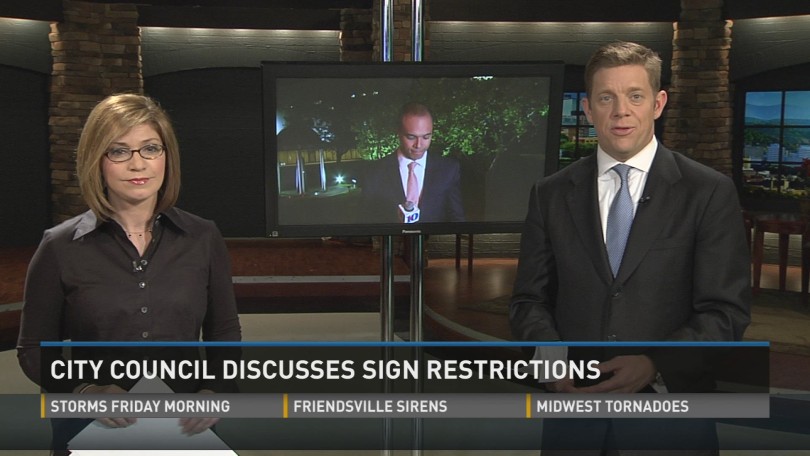The unintended consequences of a good idea.
Sign regulations = income inequality.
On Tuesday, July 7, 2015, Knoxville City Council will have the first reading of an ordinance to change sign regulations inside the city limits. This highly contested issue, which has been in different committees and workshops for over three years, is the well-intentioned effort to control “visual blight” created by commercial signage. Unfortunately, what some consider visual blight is a business necessity to others. Essentially this is a decision which pits aesthetics against the economic future of Knoxville.
Scenic Knoxville, and the other groups supporting these restrictions have documented evidence that when a community has strong sign regulations property values increase, schools perform better, and crime decreases. I suggest that correlation is not causation. Instead, it is the long term increase of greater income inequality which causes these “benefits.”
The direct impact of sign regulation is that it will become harder for new businesses to start and small businesses to expand. An attempt to grandfather existing signs just makes those properties more valuable and limits the desirability of immediately adjacent property for similar businesses. The cost of additional government regulation needed to support the “sign police” creates another layer of expense for the small business owner and a protected class for the wealthy. A more complicated system equals better and more expensive attorneys.
For future business, limiting signage will provide a direct competitive advantage to those businesses which can buy a street facing location (Starbucks) so their low sign can be seen by passing traffic, and to national organizations with large marketing budgets. Separately, something which is rarely discussed, is the negative impact on municipal taxes when communities with strong sign restrictions lose business and no new business will move in.
However, the most striking impact is that the communities with the strongest sign restrictions also have the least affordable housing and a greater disparity of incomes. (Boulder, CO and Ashville, NC for example). Everywhere else in the US, this use of government regulation has certainly attracted a wealthier demographic.
The property values do go up because the community does “look better” and housing values are protected by government regulation. This in-turn attracts more wealth and a better educated population. A wealthier demographic is almost always better educated than the general population. It is also a proven fact that the better educated the parents, the better the public schools. This cycle continues as more people move to the city as it becomes a more “beautiful” place and their housing investment is protected. The same people who want the community to limit signs for aesthetic reasons also use similar aesthetic reasons to significantly restrict construction of new housing. Limiting housing causes the new people to either pay more for the “better” areas or move into older neighborhoods and completely remake them. Most people call this Gentrification (Just Google: Nashville cost of housing in Sylvan Park and East Side) as older neighborhoods are transformed by the new, wealthier people moving to the city, but who still cannot afford to live in the “better areas”.
In the future, whatever the City Council decides will most likely be in conflict with the recent Supreme Court decision in the case of Reed v. Town of Gilbert, Arizona, which brings into question all existing sign regulation and the equally important Texas Dept. of Housing v Inclusive Communities Project which specifically calls into questions all zonings which use aesthetics as one of the criteria for housing regulation. (These were easy to miss as they came out the same days as the ruling on the Affordable Care Act and the legalization of same-sex marriage.)
Today, July 7, the Knoxville City Council will vote on your immediate future at 7 PM.
Knoxville has a 5% unemployment rate, a diverse economy, and there are thousands of jobs which are just now beginning to move here. The regional economy is growing, the University of TN is growing, and people from all over the country are choosing to move here with the sign regulations which exist today.
Why would anyone change a winning program?
Do you want the ideal of Perfect to be the enemy of Real Damn Good?
Regardless, pick one side and go to the City County Building – it will be a good show.




